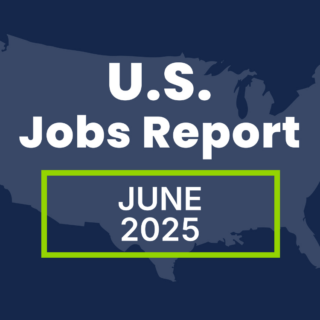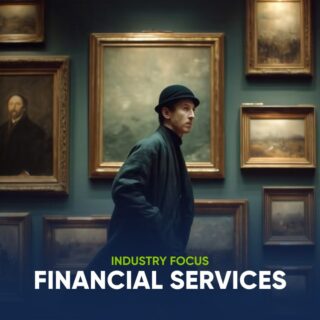In this episode of Talking Talent with PeopleScout, we’re focusing on the importance of hiring people with disabilities and how you can create and execute an effective program that serves candidates of all abilities.
The week of March 13 is Neurodiversity Celebration Week, challenging stereotypes and misconceptions about neurological differences in transforming how neurodivergent individuals are perceived and supported. It’s a week to recognize the many talents and advantages of being neurodivergent while creating more inclusive and equitable cultures, and employers have a role. While not all people with disabilities are neurodivergent and not all neurodivergent people have disabilities, it is essential for employers to understand how to best support these candidates and employees.
Joining to discuss this topic is Tim Powell, PeopleScout managing director of APAC.
Where does your passion for hiring people with disabilities come from?
I’m very invested in the broader issue of equality and diversity, both from a societal perspective and as it specifically relates to the organizational environment. My father worked for the United Nations supporting the disadvantaged, and my interest in this area was a part of my nurturing. I became much more active in the disability sector through the personal experience of raising our daughter who suffers from a rare neurological disorder and is profoundly impacted by it.
The focus on how we can better support people with disabilities entering and embedding themselves in the workforce was a natural development given my professional background. Here in Australia, in our major national disability employment program, 70% of new starters with disabilities do not survive the probation period with their employer.
What do programs for hiring people with disabilities look like at most organizations today?
In my experience, for most organizations, hiring people with disabilities is more of a sporadic initiative rather than a structured program. Therein lies part of the challenge. The issue is not so much what their programs look like, it’s that their programs don’t have structure around it.
Organizations need to first understand why they want to focus on hiring people with disabilities. Is it corporate social responsibility? Is it a way of accessing an available workforce in a tight labor market? Or is it to enhance workforce efficiency and effectiveness? These are all legitimate reasons for employers to build these programs.
How can talent leaders better understand the types of attributes that candidates with disabilities possess and what types of roles would be a good match?
It starts with selecting and shaping the role or the roles that are being targeted for the program. Unfortunately, there’s no one right answer to this question. Having clarity about the goals of the program is important here, as it will influence the types of roles that are considered. Too often, organizations select existing roles in the organization without necessarily thinking through how the person with a disability may or may not be able to carry it out. In many cases, the roles need to be carved up and shaped to the capabilities of the individuals being targeted.
How can employers reach this talent pool?
Finding candidates can be really challenging for talent leaders, particularly if they’re not quite sure what they’re looking for in terms of the skill sets or the roles that they’re looking to include in the program of work. Once you understand what you’re looking for, it becomes more evident where you can find these talent pools. Then, it is best to partner with an external provider. There are organizations, like Jigsaw Australia, that can help organizations find the right people.
What are some best practices for interviewing and assessing candidates with disabilities?
It’s important to assess basic competencies, attributes, capacity, and willingness to learn rather than previous job experiences or how well someone might present. People who are in the early stages of entering the workforce will often have very limited work experience. They may not have participated in the typical structured school/work experience programs that many early careers candidates complete. In many cases, they are challenged by some of the very basics around work experience in terms of things like workplace etiquette and timeliness.
I sit on the board of directors for a progressive service provider that thoroughly prepares people with disabilities to enter the workforce. They work through a series of competency-driven programs to build the individual’s readiness and confidence to join and thrive in the workforce. This is not a short-term program. Participants can be in this stage of development for up to two years or more before being ready to venture out into the open market.
For employers looking to start a program employing people with disabilities, this means that you need to be transparent about the core competencies and take a long-term view of the development of those individuals.
How can talent leaders prepare their internal talent teams and managers so that they’re equipped to make the onboarding process as smooth as possible and ensure success for their new employees?
There’s a line of thinking that says it’s best not to draw attention to a person’s disability, so don’t make too much of a fuss about it with others in a new work environment. While I can appreciate where that thinking comes from, I don’t particularly subscribe to the approach. In my experience, it often leads to misunderstanding and alienation. I think that making sure everyone around the individual is aware of the situation, while of course respecting the sensitivity of this situation, leads to the best outcomes. So, talking to managers and other team members about the characteristics and preferences of a person is entirely appropriate if it’s done in a way that’s sensitive to that individual’s privacy and dignity.
For example, a person with autism may not be comfortable talking about themselves in a group meeting. Team members need to be aware that their colleague may not make eye contact, for instance. That’s because it’s their preference, and team members shouldn’t take that personally or stop interacting with them. This is where education and training in advance of the new colleague are really important.
What can employers do to ensure that their new hire has continued success within their organization?
Ongoing support is obviously the short answer. Make sure that the person has someone that they’re comfortable with outside of their direct manager who can check in on them. Leaders should also engage with the new hire about what support they need and how they’re finding their experience. People with disabilities generally want to be engaged with and are open to talking about what support they require. In fact, in many cases, they’re very used to it just because of the nature of their life experience.
If some elements are not working, there may be additional training or support that is required, and there may need to be additional work in managing or adjusting the expectations of all involved. Employers need to be actively thinking about what could be done differently to produce a better outcome. It’s not just about how the individual is feeling and progressing but how the manager and the team around them are feeling. Lastly, it’s important that if everything is being done to support the employee but the outcome is not meeting expectations, be prepared to act. Don’t linger on it. Sometimes I’ve noticed employers shy away from difficult decisions, but that doesn’t help anyone.
Are there any thoughts you’d like to leave us with?
This isn’t easy. If it was, more organizations would be much further down the path. But it is worthwhile, not only because it’s the right thing to do, but because it makes good business sense. Start small, build confidence, think laterally, and then see where it goes to from there. It’s a wonderful journey if you are committed to it.



![[Webinar] Smart Hiring in the AI Age: What UK Candidates Are Really Doing in 2025](https://www.peoplescout.com/wp-content/uploads/2025/05/AI-enable-applicant-report-320x320.jpg)